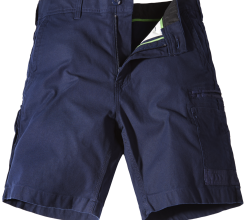House Renting Checklist: What to Inspect Before Moving In

Looking at houses for rent is an exciting endeavor, but before you sign the lease and move in, it’s crucial to thoroughly inspect the property to ensure it meets your needs and is in good condition. Conducting a comprehensive inspection can help you avoid potential issues down the road. In this guide, we’ll provide you with a house renting checklist of key areas and features to inspect before moving in.
Start with a Thorough Walkthrough
Before diving into specific areas, begin with a general walkthrough of the entire property. Take note of the property’s overall condition, cleanliness, and any noticeable damage. Check for any odors, signs of pests, or safety hazards. This initial assessment will give you a sense of the property’s maintenance level.
Kitchen
Appliances
Inspect all kitchen appliances to ensure they are in working order. This includes the stove, oven, refrigerator, dishwasher, microwave, and any other appliances provided by the landlord. Check for any signs of rust, leaks, or unusual noises.
Cabinets and Countertops
Examine the cabinets and countertops for damage, wear, or signs of pests. Ensure that cabinet doors and drawers open and close smoothly. Look for water stains or mold around sinks and faucets.
Plumbing
Turn on the faucets and check for water pressure and temperature consistency. Look for any leaks under the sink or around the plumbing fixtures. Make sure the garbage disposal, if present, is functioning properly.
Bathroom
Fixtures
Inspect the bathroom fixtures, including the sink, toilet, shower, and bathtub. Ensure that faucets and handles work correctly and that there are no leaks. Check the toilet for flushing issues and any signs of water damage around the base.
Ventilation
Check the bathroom’s ventilation system, such as the exhaust fan, to ensure it is operational. Adequate ventilation is essential to prevent mold and mildew growth.
Grout and Caulking
Inspect the grout and caulking in the bathroom for cracks, gaps, or signs of wear. Proper sealing is essential to prevent water damage and mold growth.
Bedrooms
Flooring
Examine the bedroom flooring for any stains, scratches, or damage. If the property has carpet, check for signs of wear or odors. Ensure that the windows open and close smoothly and that they have locks for security.
Closet Space
Check the closet space in each bedroom for sufficient storage. Ensure that closet doors or organizers are in good condition and functioning properly.
Living Room
Flooring
Inspect the living room flooring for any issues, such as stains or damage. If the property has a fireplace, ensure that it is in working order and free of debris.
Windows and Doors
Check the windows and doors in the living room for proper operation and security features. Ensure that they open, close, and lock correctly.
Outdoor Areas
Yard and Garden
Inspect the yard and garden areas, if applicable. Ensure that they are well-maintained, free of overgrown vegetation, and have adequate drainage. If there is a lawn, check for signs of pests or disease.
Deck or Patio
If the property has a deck or patio, examine its condition. Look for any signs of rot, loose boards, or structural issues. Ensure that railings are secure and safe.
Exterior
Inspect the exterior of the house for any damage, such as peeling paint, cracks, or loose siding. Check for proper drainage to prevent water issues.
Electrical and HVAC Systems
Electrical Outlets and Switches
Test all electrical outlets and switches in the house to ensure they are working correctly. Look for any exposed wires or signs of electrical problems.
HVAC System
Inspect the heating, ventilation, and air conditioning (HVAC) system. Check for proper airflow, and test the heating and cooling functions. Change or clean air filters as needed.
Smoke and Carbon Monoxide Detectors
Ensure that smoke detectors and carbon monoxide detectors are present in the required areas and are in working order. Test them to ensure they function correctly.
Safety and Security
Locks and Security Features
Check the locks on all doors and windows for security. If the property has a security system, ensure that it is operational, and you have the necessary access codes and instructions.
Fire Extinguishers and Fire Escapes
Inspect for the presence of fire extinguishers and fire escapes, if applicable. Ensure that fire safety measures are in place and accessible.
Rental Agreement
Finally, review your rental agreement to understand your rights and responsibilities as a tenant. Clarify any questions or concerns with your landlord before signing the lease.
Conclusion
A thorough house renting checklist can help you identify any potential issues before moving in and ensure a smooth transition to your new rental home. Don’t hesitate to document any concerns or needed repairs and discuss them with your landlord. By taking the time to inspect the property carefully, you can enjoy a comfortable and worry-free renting experience.



